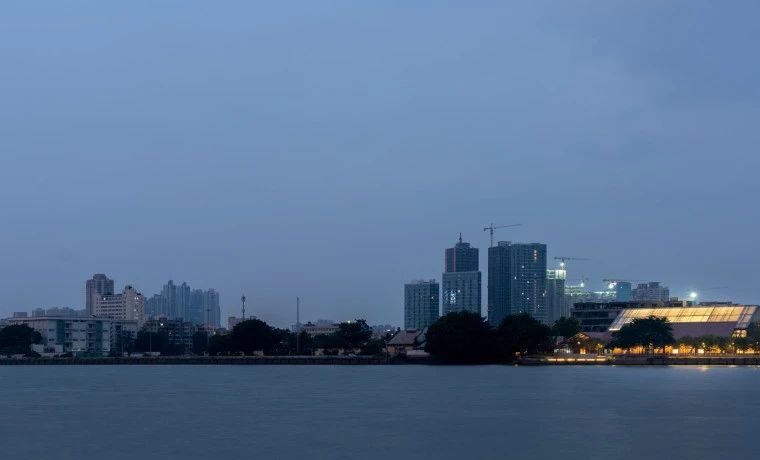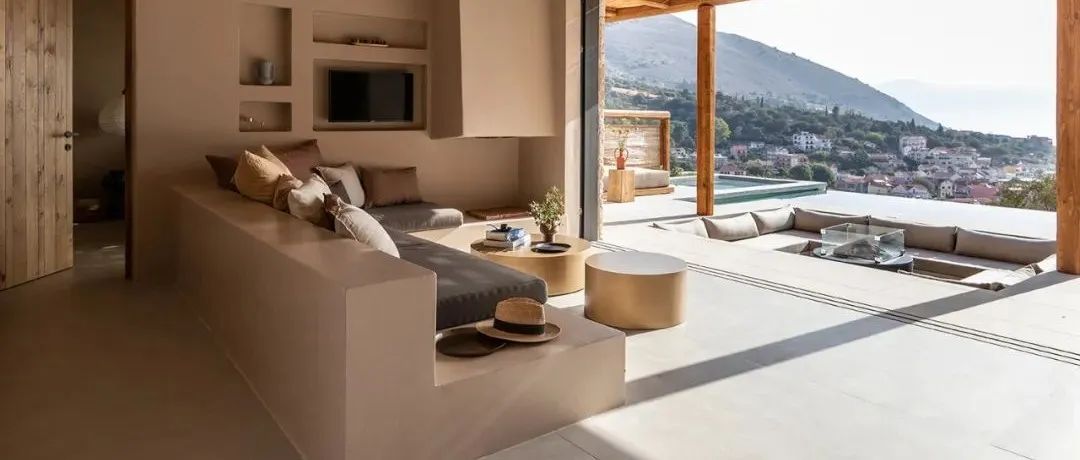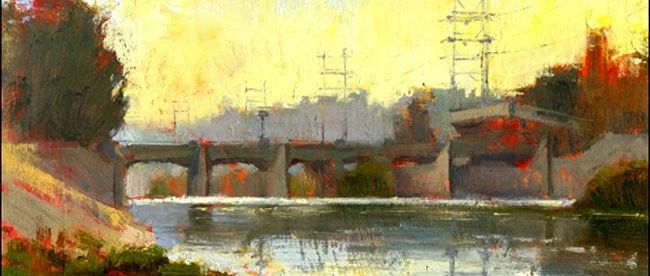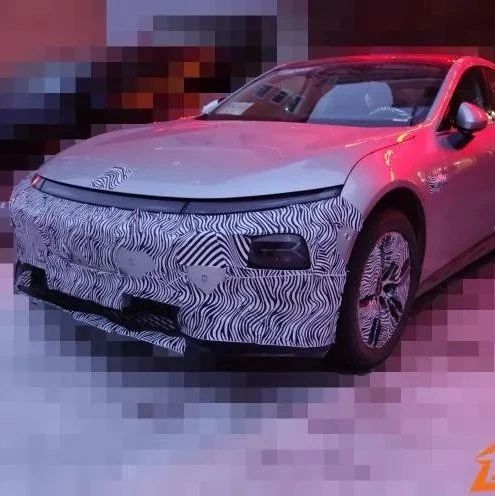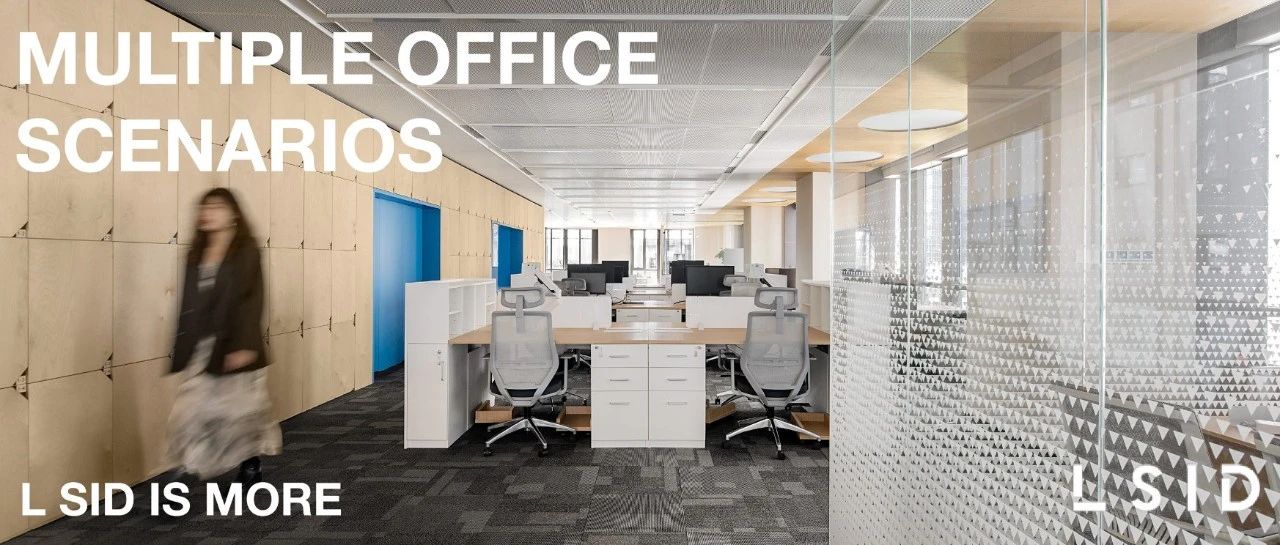—
本文内容由 DOMANI 东仓建设 策划撰写,
项目图片版权归 DOMANI东仓建设 所有;
该内容已授权 环球设计(ID: DesiDaily)
于2022年12月13日进行项目首发。
如需转载,请联系后台接洽转载事宜,侵权必究。
—
自1843年广州开埠以来,珠江两岸商贾云集,贸易发达。场地便利的航运条件以及距商贸文化核心“十三行”近便的地理位置,使其吸引了大量的外国船只在此停泊。1900年后,以亚细亚仓、太古仓等为代表的沿岸港口和仓库逐步在此区域兴建。冲口仓作为广州重要的大型粮食储备仓库亦在此建筑群内临江西岸而建。1911年,协同和机械厂建立,此后广州柴油机厂、广州钢铁厂和广州造船厂逐渐进驻,开启了珠江西岸热土的重工业基地历史。
项目已于2022年获得SITES铂金奖项,作为中国第一个获得SITES最高级别认证的项目,聚龙湾城市客厅(又名白鹅潭会展中心)成为城市绿色可持续发展标杆。
广州聚龙湾城市客厅中心位于珠江后航道西岸,总体建筑面积约5000平方米,由建于上20世纪10年代(清末)的冲口仓(曾是广州重要的大型粮食储备仓库)改造建成。
一、老建筑/保护性活化/再利用
1、Old buildings / conservation revitalisation / reuse
‘The intention in conserving and restoring monuments is to safeguard them no less as works of art than as historical evidence.’
——《威尼斯宪章》
意译:保护和修复纪念碑的目的是为了保护它们的作品性与艺术性甚于他们作为史实见证的文献性。即:作品性大于艺术性大于史实见证。
“旧建筑保护性活化”与“建筑文化遗产保护”是相邻但泾渭分明的两个领域,前者讨论的是当代城市中大范围面临不同处境与处理方式的,不具备历史文物性,只具备因岁月流逝获而得历时性价值的建筑物或场所。后者则重在研究具有特定历史文献价值或历史评价价值的建筑古迹进行可持续继承与不同修护保护的策略方法。前者具备极强的市场应用性与社会性,是种利用史实片段再加工形成的新的作品而具备独立完整的作品性。后者则存在极专业的学术理论与对历史文献处理的方法论之争,且争之不果。
对于实践型的设计师而言,由于建筑文保历保领域的头衔过大历史使命过重浑水过深监管过于复杂,其实并无太多实践空间。反而在旧建筑保护性活化的广袤领域存在大量的关于设计如何有分寸的对旧建筑进行续命的实践可能性,而诸种保护性活化方法,或是在恰当的分寸中对不同修护理论的影射与拓展。
For practicing designers, there is not much room for practice due to the overwhelming historical meaning of the architectural conservation field, which is too complicated to regulate. Instead, there is a lot of possibilities in the field of conservation revitalisation of old buildings on how to renovate. The numerous protective revitalisation approach is either an allusion to or an extension of the different repair theories in the right proportion.
冲口仓是一组江岸的老旧仓库,保留其旧建筑的身份,并完全避开被定性为历保文保建筑而得以获得崭新的命运,既没有"老当益壮"的幻觉亦不搞‘返老还童’的可笑还可以彻底避开"有若无,实若虚,大智若愚"的拧巴①。实在是其宿命中的运气。而更大的运气的是,作为设计方,我们获得这个荣幸的机会,将这组近百年的旧建筑进行场所激活并赋予其当代历时意义。
保护性/活化。从文本上保护性活化的主语是活化,定语是保护性。那么顾名思义,活化为根本,保护仅作为一种态度或方法的前提描述。随即而来的问题是:什么叫活化?怎么活化?保护什么?怎么保护?
Protective/revitalisation. Textually the subject of conservation revitalisation is revitalisation and the definite article is conservation. As the name implies then, revitalisation is fundamental and conservation is only described as a prerequisite for an attitude or approach.The ensuing question is: what does revitalisation mean? How to revitalise? What is to be protected? How to protect?
虽说建筑有人用则为活,但从广义的角度活化必须与再使用划分开截然不同的意义。以冲口仓为例,在获得改造批准前,冲口仓其实作为小商品仓库被使用了8年之久。出于经济效益考虑前使用单位仅对冲口仓进行内墙刷白与灯光布线的简单处理。这显然是一种私域的再使用并无太多讨论意义。而活化指的是通过将其转换为任何一种公共场使其具备一定商业价值所而获得某特定对象群体的主动观察与主动参与。根本区别在于场所功能的公共性及商业性,与参与者的主动性。
活化首要的任务是实现建筑功能的定性与转型。在规划部门已完成对相关场所的定性职能后,从设计端来看,在旧建筑的原生功能与预期目标功能之间找到一个平衡且实际的转换方法将摆在首位。而其中最重要的基础是对原生建筑场地特征的完整细致的观察与解读。
以冲口仓为例。由一个19世纪的粮食仓库转型为商用城市展示中心,其原始建筑组布局及其简单,13米X45米长宽比例一致结构一致的三组方舱以10米间距沿短边一字排开阵列,利用简单的图底分析来看,建筑实体空间与开放虚体空间有着良好而平衡的面积比例。而三单仓库的室内可用面积为1755平米,其实无法承担一个城市展示中心的完整功能。因此,扩建成为必要的选择。而基于原建筑物的结构特征权衡,纵向扩建将付出极高的经济成本,且对原建筑的坡顶结构将形成不可逆的伤害。于是,平面扩建成为我们判断中的首选。再回到图底关系斟酌,将其反向,使原本场地中开放的虚体空间纳入新的场所使用面积,并组织成一个非主题性的参观/接待/休憩空间,介入进原本三仓室内可承担的主要展示内容与会议内容,则能够在有限的改造范围中实现很好的功能组织与空间逻辑组织。而横向独立摆放的四仓则在新建筑的经济权衡中被独立置于主体建筑之外,因其与原三仓的动线距离颇近,我们则选择通过连廊将其组织为一个主体建筑视觉上强联系但功能上独立外挂的接待功能空间。
以上,我们很容易通过逻辑性的分析与功能布局的技巧将一个旧建筑转换为某种特定功能的新场所。但这只完成了活化的底层搭建。如果我们的定义中活化重要的因素来自于特定目标对象的主动参与与主动观察,那么,如何令一组旧建筑在当下焕发新的市场吸引力才是旧建筑活化中最核心的设计技能。
从两个面向讨论,第一,提炼表现建筑历时性。第二,设计技术性。
引借历史上经典的主流修复理论包括:保护性修复/风格性修复/文献性修复/史实性修复/科学性修复/以及最受相关权威学者推崇的来自切萨雷 ·布兰迪(1906-1988,意大利著名艺术史学家、评论家、物质文化遗产保护与修复理论家)的评论性修复。其间讨论的无不是何种程度/深度的复现和保持历史建筑的物性及其内在精神,又如何或是否正视不同阶段史实在建筑物性上遗留的痕迹及这种痕迹是否被动的成为历史建筑物性的一部分。多元化的理论争锋对"美学"与"真相","历史"与"当代"进行了不同角度的理论论证与观念迭代。
深受存在主义哲学影响的"评论性修复"理论认为"单纯的本体保持是不够的,否则遗产'只存续,而非存在;不仅应将遗产作为史料保持下去,也应揭示其内在的精神和意义……'于是遗产处理的一大任务就在于将那种潜在的存在,其意义和精神在意识中的纯粹实现。"② 其中亦延展出一个重要的关于形容有形遗产特有历史感的变化痕迹的术语——"古锈",尊重"古锈"在二战后成为国际遗保界公认的审慎传统③。
The theory of 'critical restoration', strongly influenced by existentialist philosophy, holds that 'mere ontological preservation is not enough, otherwise heritage "survives, not exists"; heritage should not only be preserved as historical material, but also its inner spirit and meaning should be revealed ......‘A major task of heritage treatment thus lies in the realisation of that potential presence, its meaning and spirit in consciousness.’② This also extends to an important term for the traces of change that describe the distinctive history of tangible heritage - 'Patina' - and respect for 'Patina' became an internationally recognised heritage tradition after the Second World War③.
"古锈"不难理解,在面对不同时期具备不同历史价值的旧建筑改造时,"古锈"亦不约而同地成为现当代设计师力图保留甚至利用的的重要素材。而旧改活化是一个已有历史建筑在动态时间中的现阶段性目标结果,这要求我们在了解尊重这种对历史建筑改造的"国际公约"的前提下,进行令历史场所能够真正对接当下的,有效的素材裁剪与重组。意味着,旧改语境中的"古锈"是一种素材而非原则,需要在一个历史建筑所涵盖的诸多信息中判断并裁剪/浓缩出确实有效的部分加以利用。可能是某种构筑形式,可能是某种历史材料,甚至可能是隐匿在建筑历史物性中具备广泛阅读性的抽象的精神或信仰,或是简单的物料风化氧化痕迹。再将其对撞进当下形成新旧并置对话的张力而具备历史与当代的连续阅读价值。也就是说,古不古锈是为用,是客体,是我们要裁剪出施加以"保护"的部分。一种可阅读可贯穿可升华的阅读感是为体,主体,是我们要呈现出立足当下的空间整体性。基于以上推理,我们则可以审慎但更大刀阔斧的看待旧改活化这一题材。
以冲口仓改造为例。当建筑物从结构,功能,材料,形式上并无值得侧目之处,但我们在场所内部依然能够体验到那种来自历史场所老化价值的浪漫感召,如何极端放大这种体验则需要在设计技术上颇具胆略。
从结构上基于经济性与时效性的考量我们选择足以代表现当代建筑技术特征的大跨度钢构+全坡顶玻璃幕墙工艺系统,这种结构亦遥相呼应了冲口仓组原生重工业区环境的历史基因。主体钢构以完全离空避让原建筑结构的方法并置进原仓组场所,主力钢柱通过计算保持与原建筑地梁距离1.4米的退让位,柱体矩阵形成的涵盖性的平面功能框架令原仓体成功让渡转换至现下新的功能逻辑。空中交错的钢梁在有效的结构计算中表现一种庞然至虚却交纵有力的形式语境。它象征或隐喻至上现代主义对一切历史时代的俯视(它是语境而非主张)。钢结构的斜度继承了原始仓体的坡屋顶斜度,这是我们在实验是否通过延展其原有的机制直至破坏并从中生成一种新机制。 而材料的选择是低沉的。虽然在同期另一个项目(时代创客小镇)中我们同样使用了手工砖这一材料元素。但两者的应用方法与材料的空间声调则截然不同。在这里,材料只沉吟的服从史实并将舞台让渡给象征精神信仰的中央装置。
这组中央装置来自原建筑顶部的拆除过程中木构架的复现。当功能性建筑结构转换为艺术装置时,物体角色感发生本质的反转。结构是空间中最稳定实用和基础的工学构件,但艺术则完全服务于抽象虚无且内在的精神信仰。它自由且高悬于空间中轴之上,交错日光以阴影扫荡一切。它当然是一种"古锈",但更是一种强有力的"现代性"的睥睨与表现。
在插花技巧中,为体现主体花卉或枝干的意境人们常常修剪次要枝干枝叶,匹配或简或繁的器型,为将在物型上的主次关注有节奏的拉开距离。空间处理如是。
二,往昔乃异乡
在今年旅途经江西瑶里古镇时,我避开沿河的村落热闹的商业牌面往村子纵深向走去。在步行困难的崎岖深村小巷间弥漫着作呕猪圈味的夯土住宅与拍照会好看的泥泞石板的包围中,在屋角偶见滴答渗水的布满肮脏苔藓污渍还包括这破布的水喉时,我意识到一个问题:人们关于旧的回味之所以美好皆因它已然彻底结束;没有人会乐于投身任何一种真实的"旧"。
2.The Past is a Foreign Land
"旧"是一种只可以远观和瞻仰的东西。无论是完善隐蔽的暖通系统,净水系统,智能化灯光,方便的洗手间,亦或是具备21世纪建造精神的干练钢结构,那些能过滤60%紫外线的幕墙玻璃像一个精致的盒子罩在一件泥尘覆盖的古器上,还有平整的地面,舒适的陈列……它们无一不是远远的拉开我们与那种"旧"的重要因素。它们让人信服的沉浸在一种当下此岸的安全感中,以足够的距离观望并感念缅怀那段一去不返的历史之彼岸。
一位遗保理论家拉斯金曾写下:建筑最大的荣耀“在于其深深的诉说感、严厉的守望感、神秘的同情感、不,甚至在于其赞同或驳斥感,即我们从其长年累月遭受人来人往之波涛冲刷的墙上感受到的那些东西。"④
这位理论家不曾言及的是观望与距离的必要性。比较的来看人之于建筑或任何一种空间,都存在有趣的即时的主客体视角的挪移。那种有着‘深深诉说感’的历史痕迹面前人往往沦为次要客体于是人们震撼,而当代的建设技术所形成的一切则将人及时拖拽回一种主体体验。旧改活化类空间的张力则来自于激烈的主客体转换。如同我们总乐见村落焕新,时代之手照拂进最贫乏最阴翳的角落,古老的屋檐下溢出咖啡香气,茶山变成先锋艺术的试验田。距离的变化就是这样一种如戏剧般令人充满希冀投入其中的东西。不可深思,它恰如游子回望再回不去的异乡。
活化是一条线,以历史之真串接现时之相,再将线头猛的抛向未来。
参考文献:
①梁思成-先话文物建筑的重修于维护[J].文物,1963(07)
②陆地-解读切萨雷 · 布兰迪《修复理论》内外的若干关键词[J]建筑师2019(04)
③陆地-梁思成的“整旧如旧”和西方的相关概念Liang Ssu-cheng's "Reintegrate the Aged as Aged" and Relevant Western Concepts[J]时代建筑2017.09/p141
④陆地-梁思成的“整旧如旧”和西方的相关概念Liang Ssu-cheng's "Reintegrate the Aged as Aged" and Relevant Western Concepts[J]时代建筑2017.09/p139
技术文件:
Technical documents:
主持设计师 Leading Designer
余霖 Ann Yu
DOMANI东仓建设创始合伙人及创作总监,A&V桉和韦森创始人及创作总监,中国代表性青年建筑/室内设计师,致力于建筑景观与室内一体化研究,空间体感与实验性空间设计。擅长通过高创作度与强商业性平衡为众多企业实现商业空间的高溢价形象。自2008年起领队囊括百余项顶级国际设计大奖。
DOMANI东仓建设成立于2005年,坐落于中国广州。致力为不同行业的前瞻性客户提供顶级的建筑、室内及产品的创意与设计。并为市场贡献完整的高水准商业设计作品,来帮助众多企业获得全新的空间体验。及通过高溢价的空间作品带来卓越的市场反馈。东仓建设作品已囊括诸多国际权威赛事殊荣,并成为亚洲地区顶级设计机构之一。
DOMANI东仓建设秉持严谨的职业态度、卓越的设计团队与全面的项目控管模式,并结合庞大的项目顾问资源系统,通过多元化的空间作品呈现更具国际视野的企业态度。
本文来自微信公众号“东仓建设”(ID:DOMANI-GZ)。大作社经授权转载,该文观点仅代表作者本人,大作社平台仅提供信息存储空间服务。


